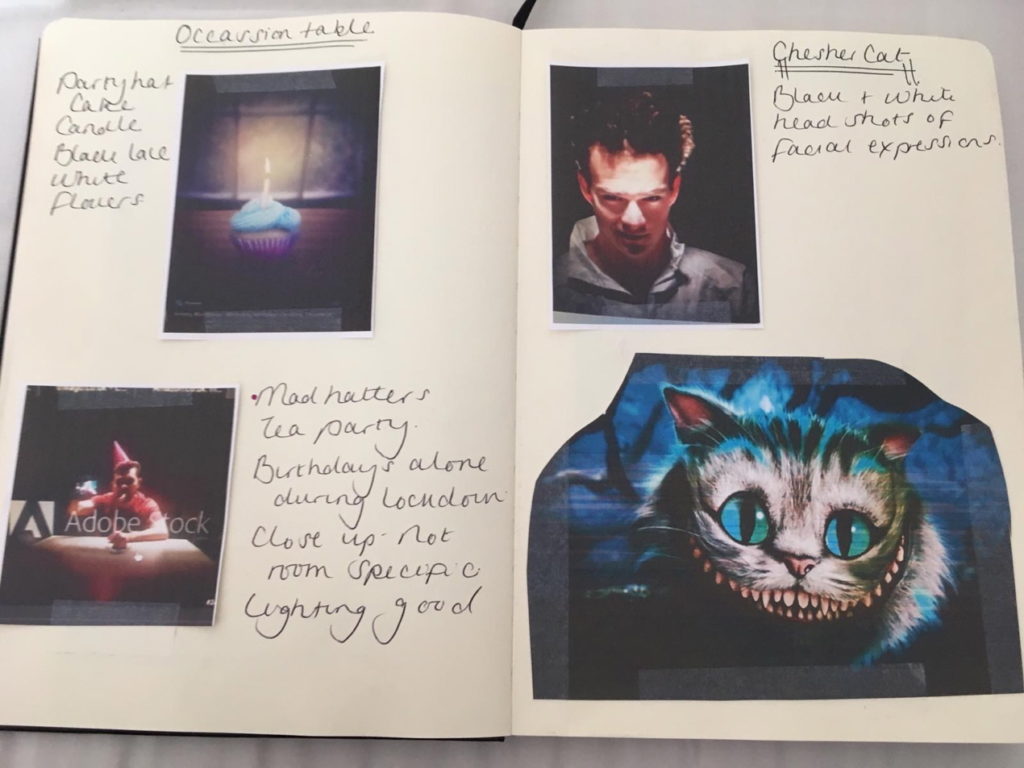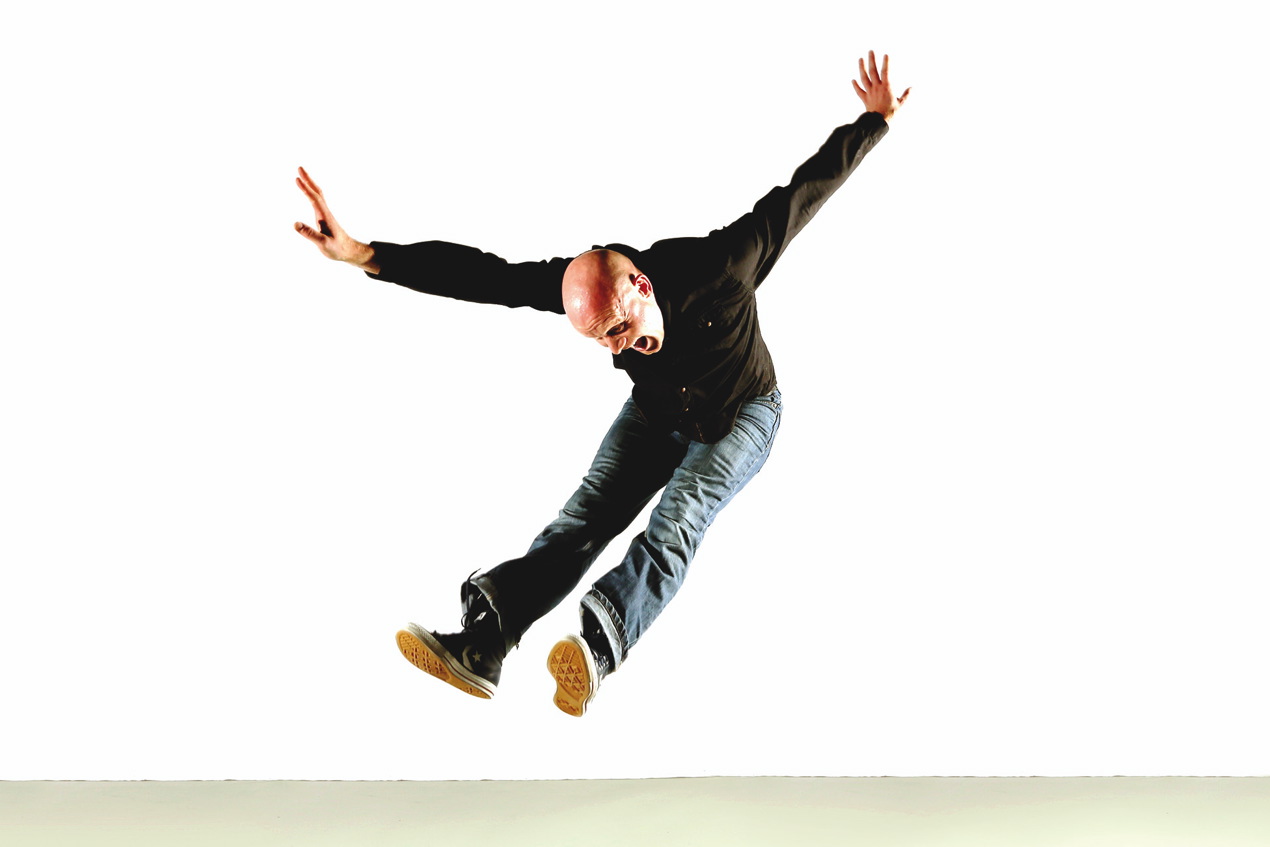Lock steps
Dancer and choreographer Gary Clarke remains influenced by his working-class roots in Grimethorpe – and now he's brought on its renowned colliery band for his pandemic-themed new work
“With any work I do, I’m always pushing and striving. I’m not afraid of trying new approaches. Sometimes that works, sometimes it doesn’t, but I’d rather die trying,” says award-winning dancer and choreographer Gary Clarke.
One of his proudest achievements to date is Coal, which he created to mark the 30th anniversary of the 1984-85 miners’ strike. Documenting the harsh reality of life in the pits, the show was a homage to the people of Grimethorpe, the mining village in South Yorkshire where he grew up, which won a raft of accolades including a UK Theatre Award. He was in the middle of touring its sequel, Wasteland, about the emergence of rave in the 1990s and how it affected Grimethorpe, when lockdown was announced.
“People in the arts were nervous that everything was going to grind to a halt, but because we work in such a creative industry, everyone’s been amazing at thinking outside the box. We’ve shown how vulnerable and resilient we are and how quickly we’ve changed and adapted,” says Clarke, 40, whose latest project is testament to that.
Called Locked down. Locked in. But living, it’s a digital dance triple-bill, also featuring work by Jordan James Bridge of Studio Wayne McGregor and Daniel de Andrade of Northern Ballet. Filmed at the Lawrence Batley Theatre in Huddersfield, it explores the theme of isolation in lockdown and is being streamed online.
“I visited the theatre when I was 16, and I’ve shown my own work there, so I was thrilled to get the phone call, even if I was also a little sceptical at first. I thought if we get too good in the digital world, is that the end of live performance? But it does have a wider reach, both geographically and in terms of new audiences,” says Clarke.
His piece is a solo dance performed by his friend and long-time collaborator Gavin Coward, with music from Grimethorpe’s Colliery Band.
“I didn’t want to make it too heavy or political. I spoke to a few people about their experiences in lockdown and many were having these very lucid dreams of being imprisoned in their own house.”
“I was interested in finding spaces backstage that audiences have never seen before – all these corners we could animate.”
The commission also coincided with the BFI releasing the first Alice in Wonderland adaptation, a silent film from 1903. “I watched it and there was just something about this idea of being lost and trying to escape that stuck, so that became the starting point.”
The fact he was given free rein of the empty theatre was “music to my ears”.
“I was interested in finding spaces backstage that audiences have never seen before, the attic, the basement, the dressing rooms – all these corners we could animate, rather than just using the stage, which is a bit boring and doesn’t throw up any challenges. It’s ambitious, theatrical and a little step from what we’re used to,” notes Clarke whose work characteristically has a sociopolitical subtext in its storytelling.
“What I like doing in my own work is shining the light on the working class and putting it in contemporary dance because it doesn’t typically belong there. I believe there’s a gap that needs to be filled and I’m the person to fill that gap.”
Growing up in the Grimethorpe, he witnessed the devastating impact of the mine closures.

“Grimethorpe went into this huge decline and became a place of poverty, crime and drugs. There was nothing, no jobs, no shops. Everyone in the village felt this pent-up frustration that they’d just been left, and a lot of my peers were going down the wrong route.”
By 1994, the EU named it the poorest village in the UK. But although his contemporaries found a release in being destructive, Clarke decompressed through dance. “It was when techno music was just coming through from Berlin. I used to buy these music tapes and put them on in my bedroom and thrash around to it. I didn’t even know I was dancing at the time; I just threw my body around for hours.”
One day, a teacher spotted him freestyling at school and told him he had the potential to be a dancer. “I didn’t even know what that was at that time, but soon after I grabbed some sunglasses, put some gel in my hair and took my little stereo onto the stage. The school went wild.”
Although he didn’t have access to formal training, Clarke was supported by friends and family from the outset.
“A lot of my friends were going to prison or dying because of heroin addiction and crime. I think my family was just relieved I’d found something to focus on. I’ve been incredibly lucky. I know a lot of people who haven’t had quite as smooth an experience as I have.’
Like all the men in his family, Clarke would’ve been expected to head down the mines had they still be open. As it was, he harboured aspirations of becoming a redcoat entertainer at Butlin’s, but at the age of 18, he successfully auditioned for the Northern School of Contemporary Dance (NSCD) in Leeds. It was life-changing because for the first time, he realised he could carve out a career in dance.
“I did find the first year quite hard because I’d never been introduced to that level of discipline. For me, dance was very instinctive – it was a coping mechanism, it was spontaneous. I didn’t understand there was a training behind it, but I had this buoyant attitude. I was energetic and a go-getter and I trusted the people who were guiding me. I’m still close to a lot of the people from that school.”
Clarke graduated in 2001 and went on to appear in Matthew Bourne’s acclaimed all-male production of Swan Lake at the age of 23. “That was huge for me – just the scale, and response. I’ve got memories and friends I’ll cherish forever.”
The similarities to Billy Elliot, the 2000 film starring Jamie Bell as a working-class boy from a mining community who goes onto star in Swan Lake, are not lost on him.
“When I saw that film, I cried throughout the whole thing because the parallels are remarkably similar. Even now, the people in Grimethorpe will say: ‘We’re really proud of you. Thanks for representing us,’” says Clarke, who lived in London for 12 years, and Antwerp in Belgium, but “nowhere felt like home”.
“Sometimes it can feel like you’re drowning in London. There are so many people and artists, it can feel a bit overwhelming. I’m a northerner and I wanted to come back.”
In addition to his own productions, he’s worked as a movement artist on big budget movies, including 2013’s World War Z starring Brad Pitt. “Inside, you might be screaming but on the outside you’ve got to keep it professional. After the first couple of days, you realise we’re all just human beings and we’ve got a job to do,” says Clarke, who also worked on the 2016 Harry Potter prequel Fantastic Beasts and Where to Find Them and 2017’s monster movie The Mummy alongside Tom Cruise.
“I feel really satisfied with what I’ve achieved as a dancer and it was a natural progression to focus more on mentoring and choreography.”
“He was very professional – that’s all I will say,” says Clarke who had to pretend to bite the Top Gun star. “It was odd but there were lots of prosthetics and make-up.”
In 2017, he received an honorary fellowship from the NSCD and is keen to continue work with the next generation of dancers as he embarks on a new decade.
“I feel really satisfied with what I’ve achieved as a dancer and it was a natural progression to focus more on mentoring and choreography. I wouldn’t say I’ve stopped performing all together. I would move and dance if the right performance project came up. Merce Cunningham, the master of contemporary dance, was still going until he was 90, so there is absolutely no age limit. It just takes a while longer to touch the toes.”
Locked down. Locked in. But living available to watch online until 18 October (thelbt.org)
The NSCD was founded by Nadine Senior MBE in 1985 and continues to remain England’s only conservatoire for dance outside London. “The school enabled individuals who wouldn’t otherwise have had access to dance education to embark upon something spectacular,” says Sharon Watson, CEO and principal. “We believe dance is enriched by embracing multiple, diverse perspectives and believe everyone should have the opportunity to succeed, so you don’t have to come ready-made to us and it’s most certainly not about status.
“Gary Clarke is proof you don’t have to be born with a silver spoon in your mouth to enjoy success in this art form. Gary has a creative mind and an inquisitive body – strengths which he brought with him to the school and that we were able to nurture through our education and his dedication.
“We remain a world-leading conservatoire that recognises our past, enabling us to build towards a brighter future, but sadly in this country there is a fundamental neglect of the arts, and it’s from the top down. All too often, and for too long, we’ve been at the bottom of the pile, which doesn’t enable us to move quickly or build resilience.
“We perhaps have more complications and therefore require even more financial support in order to be safe in this climate. We need the government to understand just how valuable the work we do is, how we create work with and for people, with their stories at its heart.”

Leave a reply
Your email address will not be published.